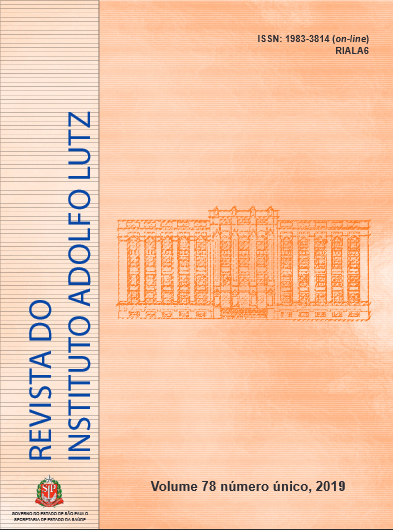Abstract
This note presents the validation of a method for determining the lithium at concentrations less than
40 μg L‑1 in the public water supply, by using the ion chromatography and external calibration, and
the analytical curve was obtained by the linear regression (ordinary least squares). The employed
method is selective, showing the detection limit equal to 1.0 μg L‑1 and the quantification limit equal
to 2.0 μg L‑1. Recovery tests in three concentration levels presented results from 99.4 to 101.9%. On
the precision evaluation in the same three concentration levels, the coefficients of variation exhibited
values between 1.1 and 4.0%.
References
1. Aprahamian I, Sousa RT, Valiengo LCL, Machado‑Vieira R, Forlenza OV. Lithium safety and tolerability in mood disorders: a critical review. Ver Psiquiatr Clín. 2014;41(1):9‑14. http://dx.doi.org/10.1590/0101‑60830000411914
2. Rosa AR, Kapczinski F, Oliva R, Stein A, Barros HMT. Monitoramento da adesão ao tratamento com lítio. Rev Psiquiatr Clín. 2006;33(5):249‑61. https://doi.org/10.1590/S0101‑60832006000500005
3. Vita A, Peri LD, Sacchetti E. Lithium in drinking water and suicide prevention: a review of the evidence. Int Clin Psychopharmacol. 2015;30(1):1‑5. https://doi.org/10.1097/YIC.0000000000000048
4. Kessing LV, Gerds TA, Knudsen NN, Jorgensen LF, Kristiansen SM, Voutchkova D et al. Association of lithium in drinking water with the incidence of dementia. JAMA Psychiatry. 2017;74(10):1005‑10. https://doi.org/10.1001/jamapsychiatry.2017.2362
5. Dovidauskas S, Okada IA, Iha MH, Cavallini ÁG, Okada MM, Briganti RC et al. Mapeamento da qualidade da água de abastecimento público no nordeste do Estado de São Paulo (Brasil). Vigil Sanit Debate. 2017;5(2):53‑63. https://doi.org/10.22239/2317‑269x.00862
6. Dovidauskas S, Okada IA, Iha MH, Cavallini ÁG, Okada MM, Briganti RC. Parâmetros físico‑químicos incomuns em água de abastecimento público de um município da região nordeste do Estado de São Paulo (Brasil). Vigil Sanit Debate. 2017;5(1):106‑15. https://doi.org/10.22239/2317‑269X.00840
7. Thompson M, Ellison SLR, Wood R. Harmonized Guidelines for single‑laboratory validation of methods of analysis. Pure Appl Chem. 2002;74(5):835‑55. http://dx.doi.org/10.1351/pac200274050835
8. Instituto Nacional de Metrologia, Qualidade e Tecnologia ‑ INMETRO. DOQ‑CGCRE‑008 ‑ Orientação sobre validação de métodos analíticos. Rev 07. Rio de Janeiro (RJ): Coordenação Geral de Acreditação; 2018. Disponível em: http://www.inmetro.gov.br/Sidoq/Arquivos/CGCRE/DOQ/DOQ‑CGCRE‑8_07.pdf
9. International Organization for Standardization ‑ ISO.ISO 8466‑1. Water quality ‑ Calibration and evaluation of analytical methods and estimation of performance characteristics. Part 1: Statistical evaluation of the linear calibration function, 1990.
10. APHA, AWWA, WEF. Standard Methods for the Examination of Water and Wastewater. 22.ed. Eaton AD, Clesceri LS, Greenberg AE, editors. Washington (DC): American Public Health Association, American Water Works Association, Water Environment Federation; 2012.

This work is licensed under a Creative Commons Attribution 4.0 International License.
Copyright (c) 2019 Instituto Adolfo Lutz Journal
